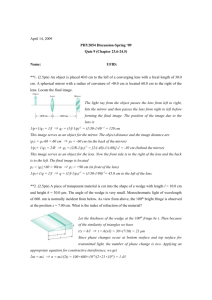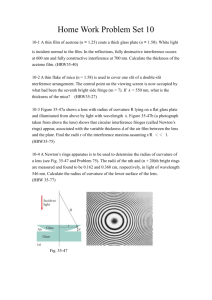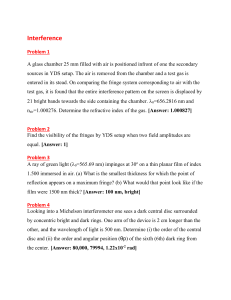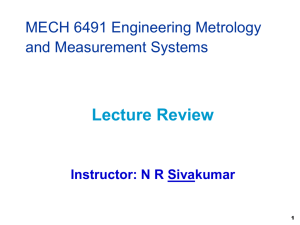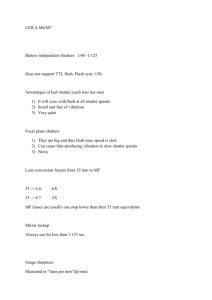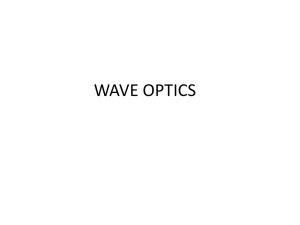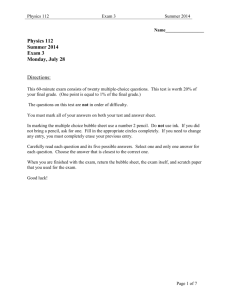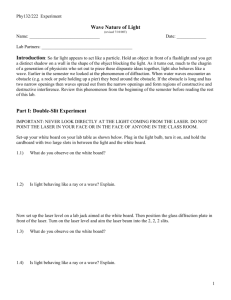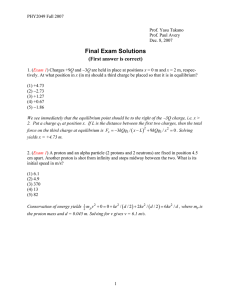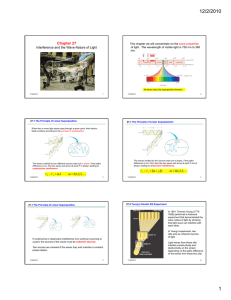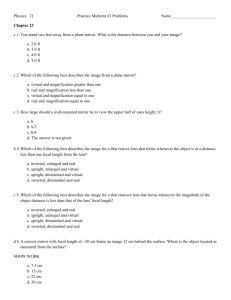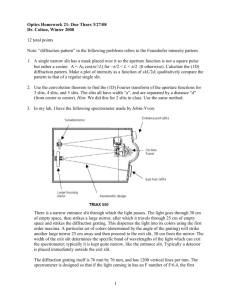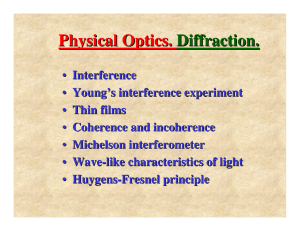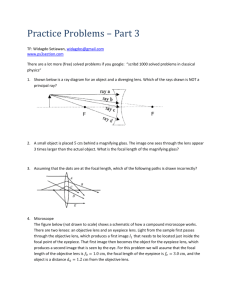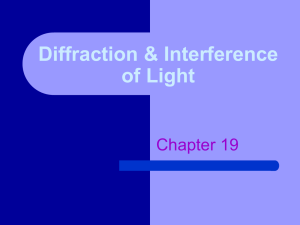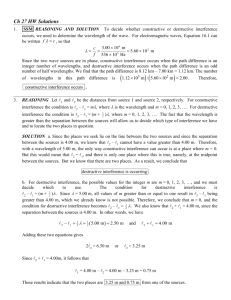Quiz 10
advertisement
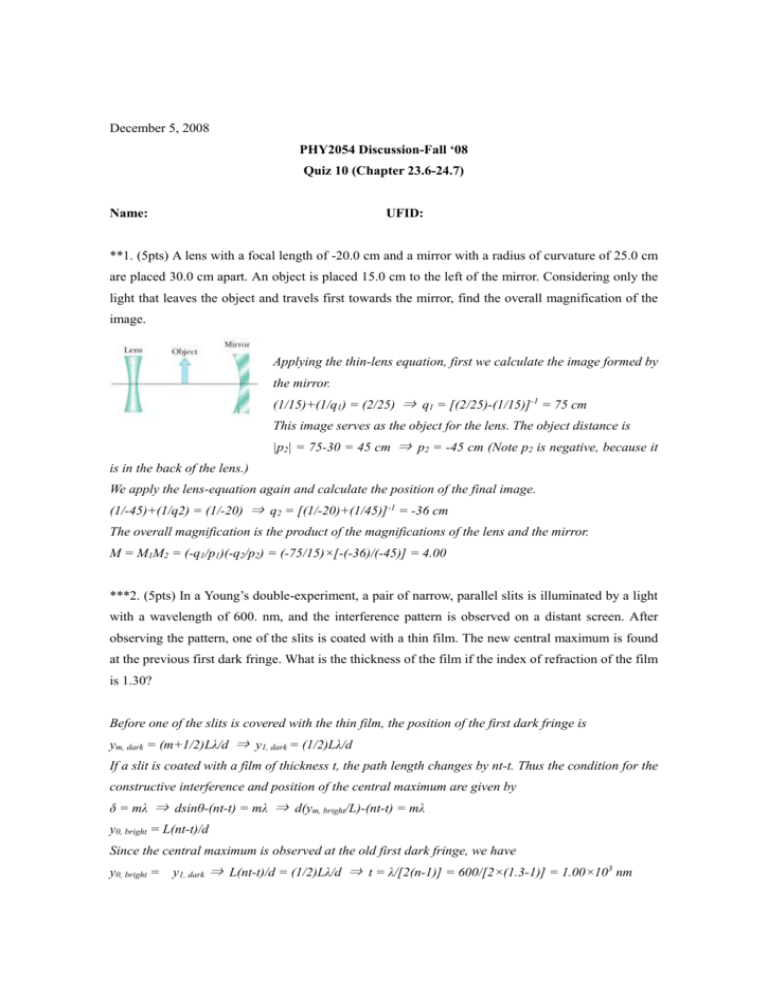
December 5, 2008 PHY2054 Discussion-Fall ‘08 Quiz 10 (Chapter 23.6-24.7) Name: UFID: **1. (5pts) A lens with a focal length of -20.0 cm and a mirror with a radius of curvature of 25.0 cm are placed 30.0 cm apart. An object is placed 15.0 cm to the left of the mirror. Considering only the light that leaves the object and travels first towards the mirror, find the overall magnification of the image. Applying the thin-lens equation, first we calculate the image formed by the mirror. (1/15)+(1/q1) = (2/25) ⇒ q1 = [(2/25)-(1/15)]-1 = 75 cm This image serves as the object for the lens. The object distance is |p2| = 75-30 = 45 cm ⇒ p2 = -45 cm (Note p2 is negative, because it is in the back of the lens.) We apply the lens-equation again and calculate the position of the final image. (1/-45)+(1/q2) = (1/-20) ⇒ q2 = [(1/-20)+(1/45)] -1 = -36 cm The overall magnification is the product of the magnifications of the lens and the mirror. M = M1M2 = (-q1/p1)(-q2/p2) = (-75/15)×[-(-36)/(-45)] = 4.00 ***2. (5pts) In a Young’s double-experiment, a pair of narrow, parallel slits is illuminated by a light with a wavelength of 600. nm, and the interference pattern is observed on a distant screen. After observing the pattern, one of the slits is coated with a thin film. The new central maximum is found at the previous first dark fringe. What is the thickness of the film if the index of refraction of the film is 1.30? Before one of the slits is covered with the thin film, the position of the first dark fringe is ym, dark = (m+1/2)Lλ/d ⇒ y1, dark = (1/2)Lλ/d If a slit is coated with a film of thickness t, the path length changes by nt-t. Thus the condition for the constructive interference and position of the central maximum are given by δ = mλ ⇒ dsinθ-(nt-t) = mλ ⇒ d(ym, bright/L)-(nt-t) = mλ y0, bright = L(nt-t)/d Since the central maximum is observed at the old first dark fringe, we have y0, bright = y1, dark ⇒ L(nt-t)/d = (1/2)Lλ/d ⇒ t = λ/[2(n-1)] = 600/[2×(1.3-1)] = 1.00×103 nm **3. (5pts) A planoconvex lens with radius of curvature R = 3.00 m is in contact with a flat plate of glass. A light source and the observer’s eye are both close to the normal. The radius of the 60th bright Newton’s ring is found to be 10.0 mm. What is the wavelength of the light produced by the source? The vertical distance between the lens and the plate at the 60th bright fringe is t = R-√(R2-r2) = 3-√(32-0.012) = 1.67×10-5 m Since ray 1 undergoes a phase reversal, the condition for constructive interference is 2t = (m+1/2)λ (m = 0, 1, 2, . . . ) The 60th ring corresponds to m = 59, thus we have λ = 2t/(59+1/2) = 2×1.67×10-5/59.5 = 5.61×10-7 m *4. (5pts) Light of wavelength 580. nm illuminates a slit of width 0.750 mm. At what distance from the slit should a screen be placed if the first minimum in the diffraction pattern is to be 0.800 mm from the central maximum? When the diffraction angle is small, sinθ ≈ tanθ = ym/L. Using the formula for destructive interference, the distance between the slit and screen is calculated as dsinθdark = mλ ⇒ ym, dark = mλL/d ⇒ y1, dark = λL/d ⇒ L = y1, dark d/λ = 0.8×10-3×0.75×10-3/580×10-9 = 1.03 m
